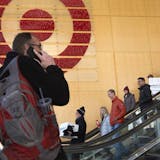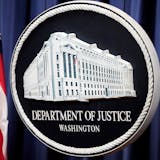Normally, thousands of volunteers would have packed Allianz Field this week to fill 40,000 backpacks with school supplies for Twin Cities students in need.
But with the COVID-19 pandemic and crowd restrictions, it's hardly a normal year. So Greater Twin Cities United Way's largest volunteer event of the year retooled into a virtual one for the first time in 13 years. Instead of heading for the soccer stadium in St. Paul, volunteers stayed home to fill backpacks with notebooks, crayons and other supplies in advance of a distribution day Thursday.
CEO John Wilgers said the turnout of volunteers — about 3,000 people compared with last year's 4,000 — was stable despite the switch from an in-person Action Day event, showing that people, especially some new volunteers to United Way, are still yearning for ways to give back.
Attracting 3,000 volunteers to a remote volunteering initiative "I think is super successful," Wilgers said. "The other thing we've maybe done is appeal to a group of volunteers who maybe otherwise wouldn't have volunteered. ... People are searching for safe ways to engage amidst this pandemic."
Nonprofits across Minnesota have reworked volunteer events during the pandemic, with many shifting to activities volunteers can do at home or online. Despite that, some nonprofits report a surge in the number of Minnesotans who want to help and are volunteering for the first time.
Wilgers said the popularity of virtual activities during COVID-19 means that, once the outbreak is over and United Way resumes in-person events, they'll still include a virtual option for volunteers.
On Thursday, more than 80 nonprofits and school districts will pick up 40,000 backpacks at Allianz Field to give to students (people can donate through Thursday or log on at noon Thursday for a virtual celebration at actionday2020.com). After volunteers put together 3,000 backpacks, United Way used donations to buy the remaining 37,000 backpacks pre-filled with supplies.
Because of the pandemic, Minnesota's largest school district, Anoka-Hennepin, is doing a hybrid model with two days a week in class this fall, while St. Paul and Minneapolis districts are doing remote learning only. But even with in-person learning scaled back or eliminated, Wilgers said, students still need notebooks and school supplies. In fact, he added, the need for help affording school supplies is greater than ever as the economic crisis during COVID-19 worsens, forcing families to make cuts to make ends meet.



